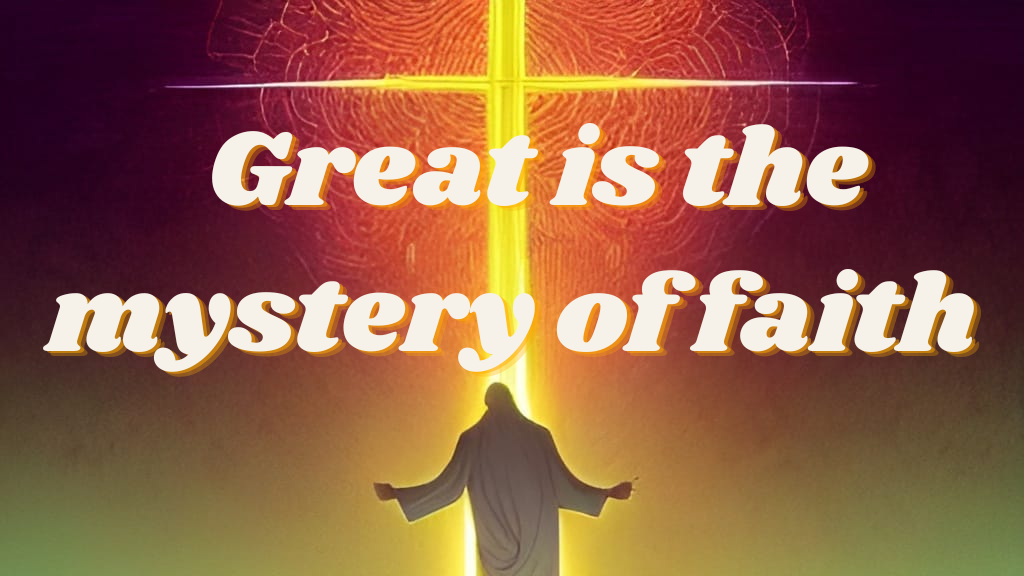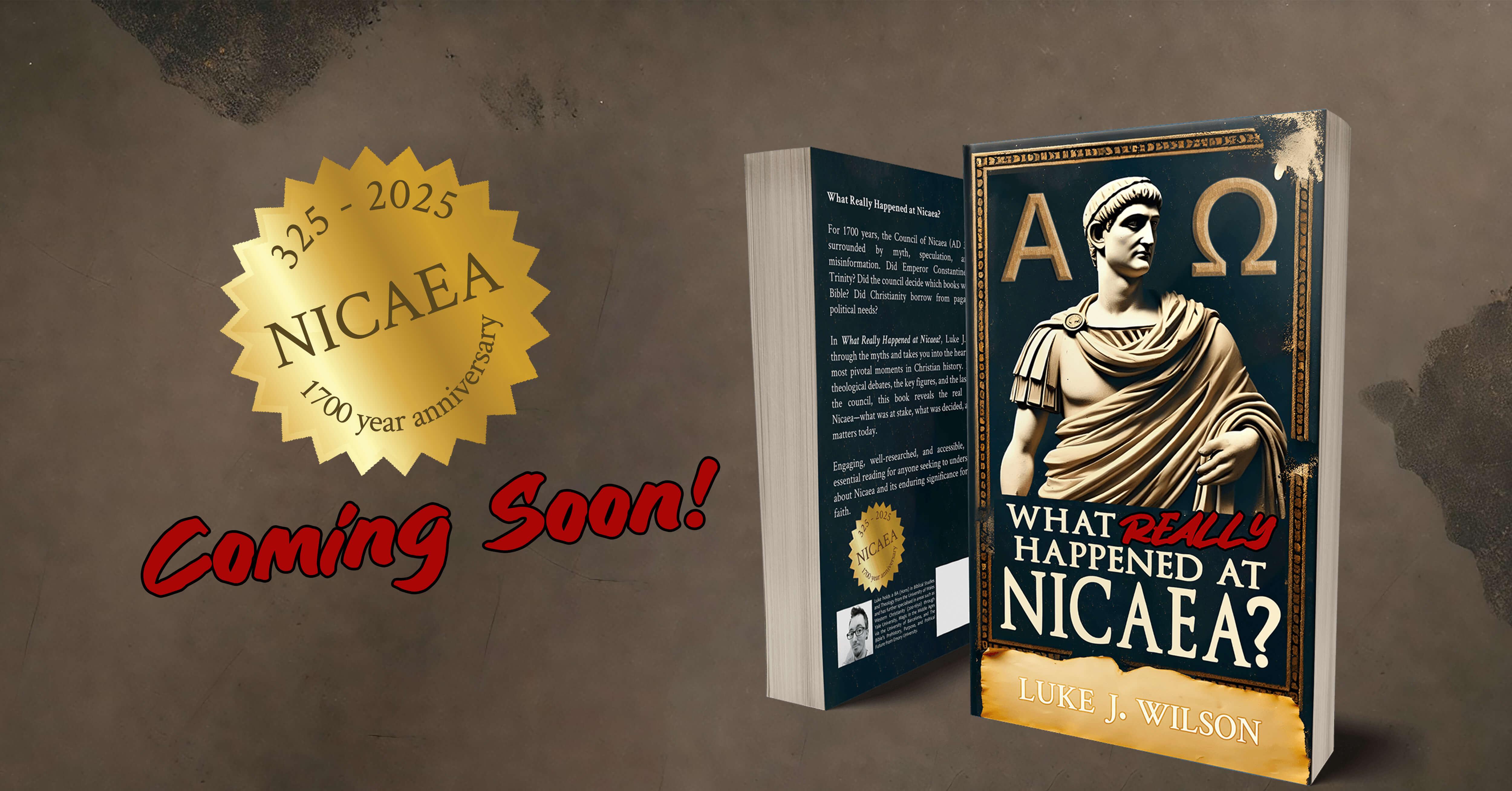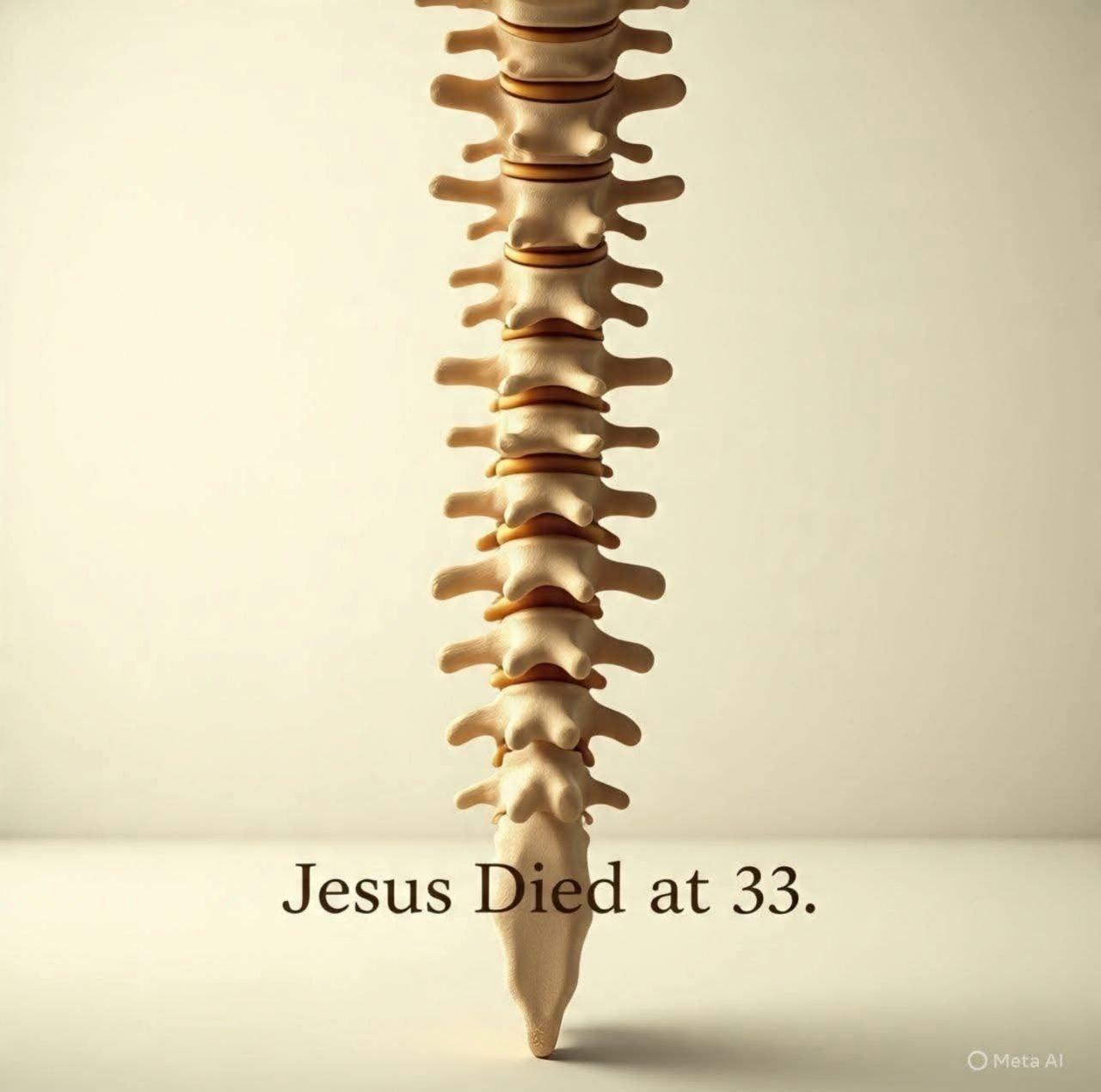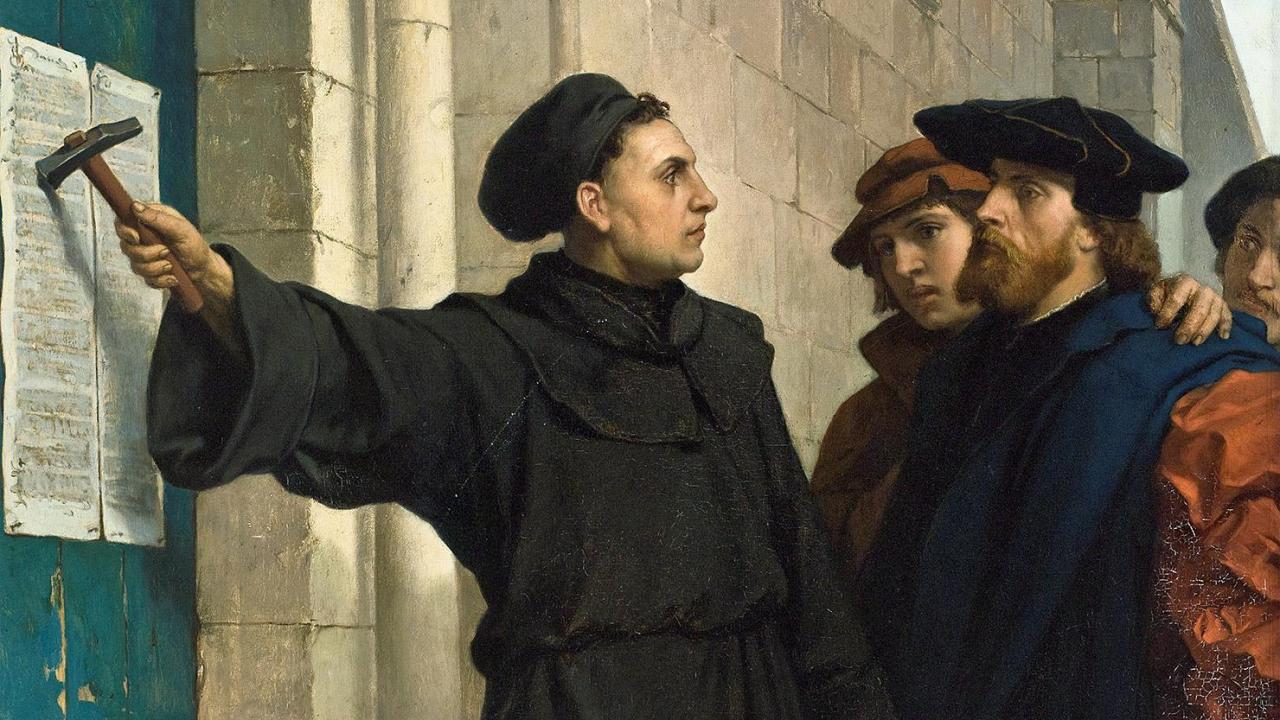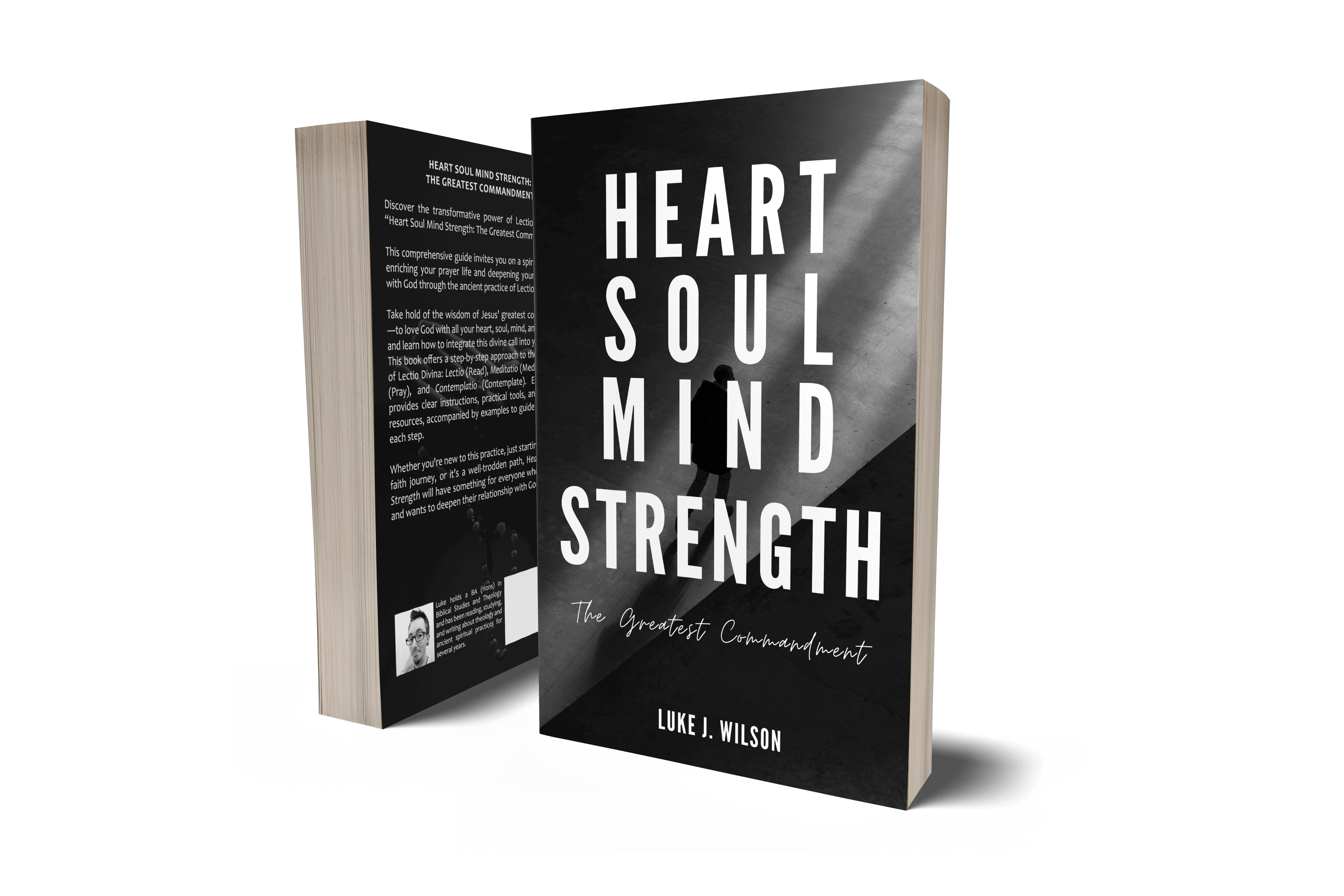Creedal Christians: The Nicene Creed
The Nicene Creed — what is it and why is it called that?
This creed gets its name from a time and place: the first ecumenical Church council held at Nicaea, which is now known as İznik in northwestern Turkey, in 325 AD.
Now that may raise another question for you: what is an ecumenical council? Well, to explain more about the Nicene Creed, we are going to have to take a look at The First Council of Nicaea in order to better understand why this creed was written.
First things first though; an “ecumenical council” is ideally a Church-wide meeting where all the Bishops from all across the Church come together to hold a very large and very important meeting to discuss topics and issues affecting the whole Body of Believers, with the results intended to be binding on all believers. Most often, these Councils were called to combat heresy and false teachers who had come about and gained enough popularity that it warranted an official response, with the creeds being the result after proper orthodoxy had been ratified.
Seeking unity, the Council was convened by Constantine I in response to the Arian controversy which had gripped the Greek-speaking East. The teaching of Arius of Alexandria were considered heretical by most bishops of the time, fearing that it would cost people their salvation. 1800 bishops were invited by Constantine (that was every bishop across the Roman Empire), but only around 250-320 turned up from across the Empire, except Britain, according to the various surviving documents from different attendees.
This Council was an extremely historic event as nothing quite like it had happened before since the Council of Jerusalem around 50 AD (Acts 15), which convened in a similar manner to counter controversial and false teaching which was upsetting the Church Body. As with that Council, the Nicene Council and its outcome was intended for the whole of the Church global.
What actually happened at Nicaea
I won’t go into too much detail about everything the Council discussed, but other than condemning and exiling Arius for his false teaching that the Son of God was a created being (or “creature”) out of nothing like the rest of creation, the council aimed to settle on a uniform date for celebrating Easter as the East followed Jewish customs of Passover for the date, and the West followed another custom. Other than that, the other decrees (“canons”) declared were to do with how bishops should be consecrated, how bishops and priests should stay within their parishes and some rules on lending money with interest. There were 20 short canons/rulings in all which you can read here, if you’re interested to see exactly what went on.
For another viewpoint of what occurred during the Council, Eusebius of Cæsarea (who you may know as the author of Ecclesiastical History) was in attendance and wrote a letter covering the events to send back to his Diocese explaining the formation of the creed and why and how they came up with it. You can read his letter here, or you can also read the letter of Athanasius who was also present at the council as a secretary to the Bishop of Alexandria, here. It’s also often said that Nicholas of Myra (also known as Saint Nicholas – yes, that St. Nick) attended and actually slapped Arius across the face(!), but that is most likely an exaggeration at best, or an urban legend.
If you do read the canons of the council and the letters of Eusebius and Athansius, you’ll see that the Nicene Council had some specific goals to achieve and that their main objective was that of the divine nature of Christ and how to deal with the teaching of Arius. What they didn’t do, as some pervasive myths claim, was to “decide what went in the Bible”, “create Catholicism”, “change the Sabbath to Sunday”, or “invent the deity of Christ”! The internet allows for a lot of nonsense to get spread, especially when much of the disinformation was proliferated by a Hollywood film and originated in a bestselling Dan Brown book, The Da Vinci Code.
The Reason for the Creed
First of all, then, in the presence of our most religious Sovereign Constantine, investigation was made of matters concerning the impiety and transgression of Arius and his adherents; and it was unanimously decreed that he and his impious opinion should be anathematized, together with the blasphemous words and speculations in which he indulged, blaspheming the Son of God, and saying that he is from things that are not, and that before he was begotten he was not, and that there was a time when he was not, and that the Son of God is by his free will capable of vice and virtue; saying also that he is a creature.
The Synodal Letter, Council of Nicaea
And the words invented by them [the Arians], and spoken contrary to the mind of Scripture, are as follows:—
God was not always the Father; but there was a time when God was not the Father. The Word of God was not always, but was made 'from things that are not;' for He who is God fashioned the non-existing from the non-existing; wherefore there was a time when He was not. For the Son is a thing created, and a thing made: nor is He like to the Father in substance; nor is He the true and natural Word of the Father; nor is He His true Wisdom; but He is one of the things fashioned and made.
Epistles on Arianism and the Deposition of Arius
These quotes pretty much lay the groundwork for why the creed and council was necessary and what it aimed to achieve: an outline of proper orthodoxy which laid down the correct and Scriptural view concerning the nature of Christ’s divine nature and relation to the Trinity. By making this the official set of beliefs, this was hoped to quash the Arianism which was spreading and unite the churches together in a holy unity (John 17:20-23). And for much of history, this creed has served that purpose in acting as the “gatekeeper” of orthodoxy, pointing people towards the proper understanding of God and the Christian faith via Scripturally-based statements.
Some of you reading this may already be familiar with this creed, others may recognise aspects of it, but you may not realise that the fuller and longer version that is more common actually came around 56 years later from the First Council of Constantinople in 381 AD. The initial creed was much shorter and included a statement at the end specifically targeting the teachings of Arius. This wasn’t the only revision the Nicene Creed went under, as there was another addition many centuries later which caused some serious controversy, which exists even to this day.
The Filioque controversy
“And the Son” – filioque in Latin: the phrase in the creed which has caused the most controversy and division, was not added officially into the Roman Rite (and is still excluded in the East) until much later in 1014 AD; and on the face of it, it seems like such an innocent and small addition. Yet arguably these three little words (or one Latin word) contributed towards the Great Schism of 1054 AD, which split the Eastern and Western Church into what we now know as Roman Catholics (West) and Eastern Orthodoxy (East) as it has large implications on Christology and the doctrine of the Trinity. If you want to read more on the history of this controversy, Wikipedia has a large article on it with many references and sources to follow through on.
The Nicene Creed
In the table below, you will see the original creed from the Nicene Council, plus the additions from the Constantinople Council alongside the where these statements come from in Scripture, so that you can better see the development of this creed. The filioque is included in italics on its own line for clarity.
|
Nicene Creed (325) |
Nicene-Constantinople Creed (381) |
Scriptural Basis |
|
We believe in one God, |
We believe in one God, |
Mark 12:29, 32; Eph 4:6; Deuteronomy 6:4 |
|
the Father Almighty, |
the Father Almighty, |
Matthew 6:9; 2 Cor 6:18; Eph 4:6; Malachi 2:10; Exodus 6:3; Gen 35:11 |
|
maker of heaven and earth, |
Genesis 1:1; John 1:1; Isaiah 44:24 |
|
|
maker of all things visible and invisible; |
and of all things visible and invisible. |
Colossians 1:16; Romans 1:20 |
|
and in one Lord Jesus Christ, |
And in one Lord Jesus Christ, |
Romans 10:9; Eph 4:5,6 |
|
the Son of God, the only-begotten of his Father, |
the only-begotten Son of God, |
John 3:16; Matthew 16:16 |
|
begotten of His Father before all worlds, |
John 1:2 |
|
|
God of God, Light of Light, very God of very God, |
Light of Light, very God of very God, |
John 17:22; John 8:12; John 1:1; Colossians 2:9 |
|
begotten (γεννηθέντα), not made, |
begotten, not made, |
John 1:2; 3:16 |
|
being of one substance (ὁμοούσιον) with the Father. |
being of one substance with the Father, |
John 1:18; 10:30 |
|
By whom all things were made, both which be in heaven and in earth. |
by Whom all things were made. |
Rom 11:36; Hebrews 1:2,10; John 1:3, 10; Col 1:16; 1 Cor 8:6 |
|
Who for us men and for our salvation |
Who for us men and for our salvation |
Col 1:13-14; 1 Thess. 5:9; Matt 1:21; 1 Timothy 2:4; Romans 3:23 |
|
came down |
came down from heaven |
John 3:13, 3:31; 6:38, 41 |
|
and was incarnate |
and was incarnate by the Holy Spirit of the virgin Mary, |
Luke 1:34-35 |
|
and was made man. |
and was made man, |
John 1:14; Heb 2:14 |
|
and was crucified also for us under Pontius Pilate. |
Mark 15:15, 25; John 19:16-18; 1 Peter 2:24 |
|
|
He suffered |
He suffered and was buried, |
John 19:1-3; Luke 23:53; Matt 27:50, 59-60 |
|
and the third day he rose again, |
and the third day he rose again according to the Scriptures, |
1 Corinthians 15:3-4; Luke 24:6, 45-46; Mark 9:31; 16:9; Acts 10:40 |
|
and ascended into heaven. |
and ascended into heaven, |
Acts 1:9 |
|
and sits at the right hand of the Father. |
Mark 16:19; Luke 22:69; Acts 7:55 |
|
|
And he shall come again |
And He shall come again with glory |
Matthew 26:64; Mark 13:26; Jn 14:3; 1 Thess. 4:17 |
|
to judge both the living and the dead. |
to judge both the living and the dead. |
Acts 10:42; Matthew 3:12; 16:27; 2 Cor 5:10; 2 Tim 4:1; 1 Peter 4:5 |
|
Whose kingdom shall have no end. |
Heb 1:8; 2 Peter 1:11 |
|
|
And in the Holy Ghost. |
And we believe in the Holy Spirit, the Lord, the giver of life |
Acts 1:8; John 6:63; 2 Cor 3:6 |
|
Who proceeds from the Father, |
John 15:26 |
|
|
and the Son; (Latin: filioque) |
John 16:7 |
|
|
Who with the Father and the Son is worshipped and glorified, |
2 Corinthians 13:14; Ephesians 1:13-14; 1 Peter 1:2,12; Phil 3:3; Romans 12:1 |
|
|
Who has spoken through the prophets. |
1 Peter 1:10-11; Eph 3:5; Matthew 2:23; Hebrews 1:1 |
|
|
And we believe in one, holy, catholic (universal) and Apostolic Church. |
Eph 4:4; Eph 1:4, 5:27; Matt 28:19; John 17:20-23; Acts 1:8; Eph 2:20; Matt 16:18; Rom 12: 4-5; 1 Cor 10:17; Col 1:18 |
|
|
We acknowledge one baptism |
Eph 4:5; Gal 3:27; 1 Cor 12:13 |
|
|
for the forgiveness of sins, |
Acts 2:38; 22:16; Col 2: 12-13; 1 Peter 3:21 |
|
|
we look for the resurrection of the dead |
John 11:25; Luke 20:36; John 5:28-29; Rom 6:4-5; 1 Thess. 4:16 |
|
|
And the life of the world to come. Amen. |
2 Peter 3:13; Rev 21:1 |
|
|
And whosoever shall say that there was a time when the Son of God was not (ἤν ποτε ὅτε οὐκ ἦν), or that before he was begotten he was not, or that he was made of things that were not, or that he is of a different substance or essence [from the Father] or that he is a creature, or subject to change or conversion (τρεπτὸν) — all that so say, the Catholic and Apostolic Church anathematizes them. |
That's all for the Council of Nicaea, I hope this has helped to clarify what happened at Nicaea and why the Church decided to create such a creed in defense of true doctrine against heresy; and if you missed it before, you can also read my article about the Apostle’s Creed to see how and why that came about.
Don’t forget to subscribe so you don’t miss any more updates in this series and leave any thoughts in the comments below!
Further Reading and Sources:
- Letter of Eusebius on the Council of Nicaea (eyewitness account)
- Athanasius, Letter to Bishops of Africa
- Athanasius, Defense of the Nicene Definition (eyewitness account)
- First Council of Nicæa (A.D. 325) - 20 Canons
- First Council of Constantinople (A.D. 381)
- Epistles on Arianism and the Deposition of Arius
- Definition: Anathema
- https://www.thegospelcoalition.org/blogs/ryan-reeves/who-was-athanasius-and-why-was-he-important/
- https://www.christianitytoday.com/history/people/scholarsandscientists/eusebius-of-caesarea.html
- https://www.cs.mcgill.ca/~rwest/wikispeedia/wpcd/wp/f/First_Council_of_Nicaea.htm
- https://www.britannica.com/event/Council-of-Nicaea-Christianity-325
- https://www.theopedia.com/ecumenical-councils
- http://www.prayerfoundation.org/nicene_creed_scripture_basis.htm
- https://brewminate.com/filioque-and-the-latin-greek-great-schism-of-1054/
- http://www.oxfordbiblicalstudies.com/article/opr/t94/e389
- https://en.wikipedia.org/wiki/History_of_the_Filioque_controversy
- http://www.religionfacts.com/da-vinci-code/nicea
Leave a comment Like Back to Top Seen 2.6K times Liked 1 times
Enjoying this content?
Support my work by becoming a patron on Patreon!
By joining, you help fund the time, research, and effort that goes into creating this content — and you’ll also get access to exclusive perks and updates.
Even a small amount per month makes a real difference. Thank you for your support!
Subscribe to Updates
If you enjoyed this, why not subscribe to free email updates and join over 864 subscribers today!
My new book is out now! Order today wherever you get books
Recent Posts
Luke J. Wilson | 19th August 2025 | Fact-Checking
A poetic post has been circulating widely on Facebook, suggesting that our anatomy mirrors various aspects of Scripture. On the surface it sounds inspiring, but when we take time to weigh its claims, two main problems emerge. The viral post circulating on Facebook [Source] First, some of its imagery unintentionally undermines the pre-existence of Christ, as if Jesus only “held the earth together” for the 33 years of His earthly life. Second, it risks reducing the resurrection to something like biological regeneration, as if Jesus simply restarted after three days, instead of being raised in the miraculous power of God. Alongside these theological dangers, many of the scientific claims are overstated or symbolic rather than factual. Let’s go through them one by one. 1. “Jesus died at 33. The human spine has 33 vertebrae. The same structure that holds us up is the same number of years He held this Earth.” The human spine does generally have 33 vertebrae, but that number includes fused bones (the sacrum and coccyx), and not everyone has the same count. Some people have 32 or 34. More importantly, the Bible never says Jesus was exactly 33 when He died — Luke tells us He began His ministry at “about thirty” (Luke 3:23), and we know His public ministry lasted a few years, but His precise age at death is a tradition, not a biblical statement. See my other recent article examining the age of Jesus here. Theologically, the phrase “the same number of years He held this Earth” is problematic. Jesus did not hold the world together only for 33 years. The eternal Word was with God in the beginning (John 1:1–3), and “in Him all things hold together” (Colossians 1:17). Hebrews says He “sustains all things by His powerful word” (Hebrews 1:3). He has always upheld creation, before His incarnation, during His earthly ministry, and after His resurrection. To imply otherwise is to risk undermining the pre-existence of Christ. 2. “We have 12 ribs on each side. 12 disciples. 12 tribes of Israel. God built His design into our bones.” Most people do have 12 pairs of ribs, though some are born with an extra rib, or fewer. The number 12 is certainly biblical: the 12 tribes of Israel (Genesis 49), the 12 apostles (Matthew 10:1–4), and the 12 gates and foundations of the New Jerusalem (Revelation 21). But there’s no biblical connection between rib count and these symbolic twelves. This is a case of poetic association, not design woven into our bones. The only real mention of ribs in Scripture is when Eve is created from one of Adam’s ribs in Genesis 2:21–22, which has often led to the teaching in some churches that men have one less rib than women (contradicting this new claim)! 3. “The vagus nerve runs from your brain to your heart and gut. It calms storms inside the body. It looks just like a cross.” The vagus nerve is real and remarkable. It regulates heart rate, digestion, and helps calm stress, and doctors are even using vagus nerve stimulation as therapy for epilepsy, depression, and inflammation showing it really does “calm storms” in the body. But it does not look like a cross anatomically. The language about “calming storms” may echo the way Jesus calmed the storm on the Sea of Galilee (Mark 4:39), but here again the poetic flourish stretches science (and Scripture) beyond what’s accurate. 4. “Jesus rose on the third day. Science tells us that when you fast for 3 days, your body starts regenerating. Old cells die. New ones are born. Healing begins. Your body literally resurrects itself.” There’s a serious theological problem here. To equate Jesus’ resurrection with a biological “regeneration” after fasting is to misrepresent what actually happened. Fasting can indeed trigger cell renewal and immune repair, but it cannot bring the dead back to life. It’s still a natural process that happens...
Luke J. Wilson | 08th July 2025 | Islam
“We all worship the same God”. Table of Contents 1) Where YHWH and Allah Appear Similar 2) Where Allah’s Character Contradicts YHWH’s Goodness 3) Where Their Revelations Directly Contradict Each Other 4) YHWH’s Love for the Nations vs. Allah’s Commands to Subjugate 5) Can God Be Seen? What the Bible and Qur’an Say 6) Salvation by Grace vs. Salvation by Works Conclusion: Same God? Or Different Revelations? You’ve heard it from politicians, celebrities, and even some pastors. It’s become something of a modern mantra, trying to shoehorn acceptance of other beliefs and blend all religions into one, especially the Abrahamic ones. But what if the Bible and Qur’an tell different stories? Let’s see what their own words reveal so you can judge for yourself. This Tweet recently caused a stir on social media 1) Where YHWH and Allah Appear Similar Many point out that Jews, Christians, and Muslims share a belief in one eternal Creator God. That’s true — up to a point. Both the Bible and Qur’an describe God as powerful, all-knowing, merciful, and more. Here’s a list comparing some of the common shared attributes between YHWH and Allah, with direct citations from both Scriptures: 26 Shared Attributes of YHWH and Allah According to the Bible (NRSV) and the Qur’an Eternal YHWH: “From everlasting to everlasting you are God.” — Psalm 90:2 Allah: “He is the First and the Last…” — Surah 57:3 Creator YHWH: “In the beginning God created the heavens and the earth.” — Genesis 1:1 Allah: “The Originator of the heavens and the earth…” — Surah 2:117 Omnipotent (All-Powerful) YHWH: “Nothing is too hard for you.” — Jeremiah 32:17 Allah: “Allah is over all things competent.” — Surah 2:20 Omniscient (All-Knowing) YHWH: “Even before a word is on my tongue, O LORD, you know it.” — Psalm 139:4 Allah: “He knows what is on the land and in the sea…” — Surah 6:59 Omnipresent (Present Everywhere) YHWH: “Where can I go from your Spirit?” — Psalm 139:7–10 Allah: “He is with you wherever you are.” — Surah 57:4 Holy YHWH: “Holy, holy, holy is the LORD of hosts.” — Isaiah 6:3 Allah: “The Holy One (Al-Quddus).” — Surah 59:23 Just YHWH: “A God of faithfulness and without injustice.” — Deuteronomy 32:4 Allah: “Is not Allah the most just of judges?” — Surah 95:8 Merciful YHWH: “The LORD, merciful and gracious…” — Exodus 34:6 Allah: “The Most Gracious, the Most Merciful.” — Surah 1:1 Compassionate YHWH: “As a father has compassion on his children…” — Psalm 103:13 Allah: “He is the Forgiving, the Affectionate.” — Surah 85:14 Faithful YHWH: “Great is your faithfulness.” — Lamentations 3:22–23 Allah: “Indeed, the promise of Allah is truth.” — Surah 30:60 Unchanging YHWH: “For I the LORD do not change.” — Malachi 3:6 Allah: “None can change His words.” — Surah 6:115 Sovereign YHWH: “The LORD has established his throne in the heavens…” — Psalm 103:19 Allah: “Blessed is He in whose hand is dominion…” — Surah 67:1 Loving YHWH: “God is love.” — 1 John 4:8 Allah: “Indeed, my Lord is Merciful and Affectionate (Al-Wadud).” — Surah 11:90 Forgiving YHWH: “I will not remember your sins.” — Isaiah 43:25 Allah: “Allah forgives all sins…” — Surah 39:53 Wrathful toward evil YHWH: “The LORD is a jealous and avenging God…” — Nahum 1:2 Allah: “For them is a severe punishment.” — Surah 3:4 One/Unique YHWH: “The LORD is one.” — Deuteronomy 6:4 Allah: “Say: He is Allah, One.” — Surah 112:1 Jealous of worship YHWH: “I the LORD your God am a jealous God.” �...
Luke J. Wilson | 05th June 2025 | Blogging
As we commemorated the 500th anniversary of the Protestant Reformation this year, the familiar image of Martin Luther striding up to the church door in Wittenberg — hammer in hand and fire in his eyes — has once again taken centre stage. It’s a compelling picture, etched into the imagination of many. But as is often the case with historical legends, closer scrutiny tells a far more nuanced and thought-provoking story. The Myth of the Door: Was the Hammer Ever Raised? Cambridge Reformation scholar Richard Rex is one among several historians who have challenged the romanticised narrative. “Strangely,” he observes, “there’s almost no solid evidence that Luther actually went and nailed them to the church door that day, and ample reasons to doubt that he did.” Indeed, the first image of Luther hammering up his 95 Theses doesn’t appear until 1697 — over 180 years after the fact. Eric Metaxas, in his recent biography of Luther, echoes Rex’s scepticism. The earliest confirmed action we can confidently attribute to Luther on 31 October 1517 is not an act of public defiance, but the posting of two private letters to bishops. The famous hammer-blow may never have sounded at all. Conflicting Accounts Philip Melanchthon, Luther’s successor and first biographer, adds another layer of complexity. He claimed Luther “publicly affixed” the Theses to the door of All Saints’ Church, but Melanchthon wasn’t even in Wittenberg at the time. Moreover, Luther himself never mentioned posting the Theses publicly, even when recalling the events years later. Instead, he consistently spoke of writing to the bishops, hoping the matter could be addressed internally. At the time, it was common practice for a university disputation to be announced by posting theses on church doors using printed placards. But no Wittenberg-printed copies of the 95 Theses survive. And while university statutes did require notices to be posted on all church doors in the city, Melanchthon refers only to the Castle Church. It’s plausible Luther may have posted the Theses later, perhaps in mid-November — but even that remains uncertain. What we do know is that the Theses were quickly circulated among Wittenberg’s academic elite and, from there, spread throughout the Holy Roman Empire at a remarkable pace. The Real Spark: Ink, Not Iron If there was a true catalyst for the Reformation, it wasn’t a hammer but a printing press. Luther’s Latin theses were swiftly reproduced as pamphlets in Basel, Leipzig, and Nuremberg. Hundreds of copies were printed before the year’s end, and a German translation soon followed, though it may never have been formally published. Within two weeks, Luther’s arguments were being discussed across Germany. The machinery of mass communication — still in its relative infancy — played a pivotal role in what became a theological, political, and social upheaval. The Letters of a Conscientious Pastor Far from the bold revolutionary of popular imagination, Luther appears in 1517 as a pastor deeply troubled by the abuse of indulgences, writing with respectful concern to those in authority. In his letter to Archbishop Albrecht of Mainz, he humbly addresses the archbishop as “Most Illustrious Prince,” and refers to himself as “the dregs of humanity.” “I, the dregs of humanity, have so much boldness that I have dared to think of a letter to the height of your Sublimity,” he writes — hardly the voice of a man trying to pick a fight. From Whisper to Roar Luther’s initial appeal through formal channels was, predictably, ignored. He was advised not to make trouble. But as opposition mounted and corruption remained unchecked, the once quiet reformer grew louder. His theological convictions deepened, and his public persona evolved. The lion did eventually roar — but not on October 31. A Catholic Reformer, Not a Protestant Founder It’s vital to remem...
Luke J. Wilson | 20th May 2025 | Islam
You are not alone. Around the world, many Muslims — people who already believe in one God, pray, and seek to live righteously — are drawn to know more about Jesus (ʿĪsā in Arabic). Some have heard He is more than a prophet. Some have sensed His presence in a dream or vision. And some simply long to know God more deeply, personally, and truly. So what does it mean to become a Christian? And how can you take that step? This guide is for you. 1. What Christians Believe About God and Jesus ➤ One God, Eternal and Good Christians believe in one God — the same Creator known to Abraham, Moses, and the prophets. But we also believe God is more personal and relational than many realise. In His love, He has revealed Himself as Father, Son (Jesus), and Holy Spirit — not three gods, but one God in three persons. ➤ Jesus Is More Than a Prophet Muslims honour Jesus as a great prophet, born of the virgin Mary. Christians also affirm this — but go further. The Bible teaches that Jesus is the Word of God (Kalimat Allāh), who became flesh to live among us. He performed miracles, healed the sick, raised the dead — and lived without sin.Jesus came not just to teach but to save — to bring us back to God by bearing our sins and rising again in victory over death. 2. Why Do We Need Saving? ➤ The Problem: Sin All people — no matter their religion — struggle with sin. We lie, get angry, feel jealous, act selfishly, or fail to love God fully. The Bible says: “All have sinned and fall short of the glory of God.” (Romans 3:23) Sin separates us from God. And no matter how many good deeds we do, we can never make ourselves perfect or holy before Him. ➤ The Solution: Jesus Because God loves us, He did not leave us in our sin. He sent Jesus, His eternal Word, to live as one of us. Jesus died willingly, offering His life as a sacrifice for our sins, then rose again on the third day. “But God proves his love for us in that while we still were sinners Christ died for us.” (Romans 5:8) 3. How Do I Become a Christian? Becoming a Christian is not about joining a Western religion. It’s about entering a relationship with God through faith in Jesus Christ. Here is what the Bible says: ✝️ 1. Believe in Jesus Believe that Jesus is the Son of God, that He died for your sins, and that He rose again. “If you confess with your lips that Jesus is Lord and believe in your heart that God raised him from the dead, you will be saved.” (Romans 10:9) 💔 2. Repent of Your Sins Turn away from sin and ask God to forgive you. This is called repentance. It means being truly sorry and choosing a new way. “Repent therefore, and turn to God so that your sins may be wiped out.” (Acts 3:19) 💧 3. Be Baptised Jesus commands His followers to be baptised in water as a sign of their new life. Baptism represents washing away your old life and rising into a new one with Jesus. “Repent and be baptised every one of you in the name of Jesus Christ so that your sins may be forgiven.” (Acts 2:38) 🕊️ 4. Receive the Holy Spirit When you believe in Jesus, God gives you the Holy Spirit to live within you, guiding you, comforting you, and helping you follow His will. “You received the Spirit of adoption, by whom we cry, ‘Abba! Father!’” (Romans 8:15) 🧎 5. Begin a New Life As a Christian, you are born again — spiritually renewed. You begin to grow in faith, love, and holiness. You read the Bible, pray, fast, and gather with other believers. Your life is no longer your own; you now live for God. 4. What Does a Christian Life Look Like? Jesus said: “If anyone wants to become my followers, let them deny themselves and take up their cross and follow me.” (Matthew 16:24) This means: Loving God with all your heart Loving your neighbour — even your enemies Forgiving others ...




